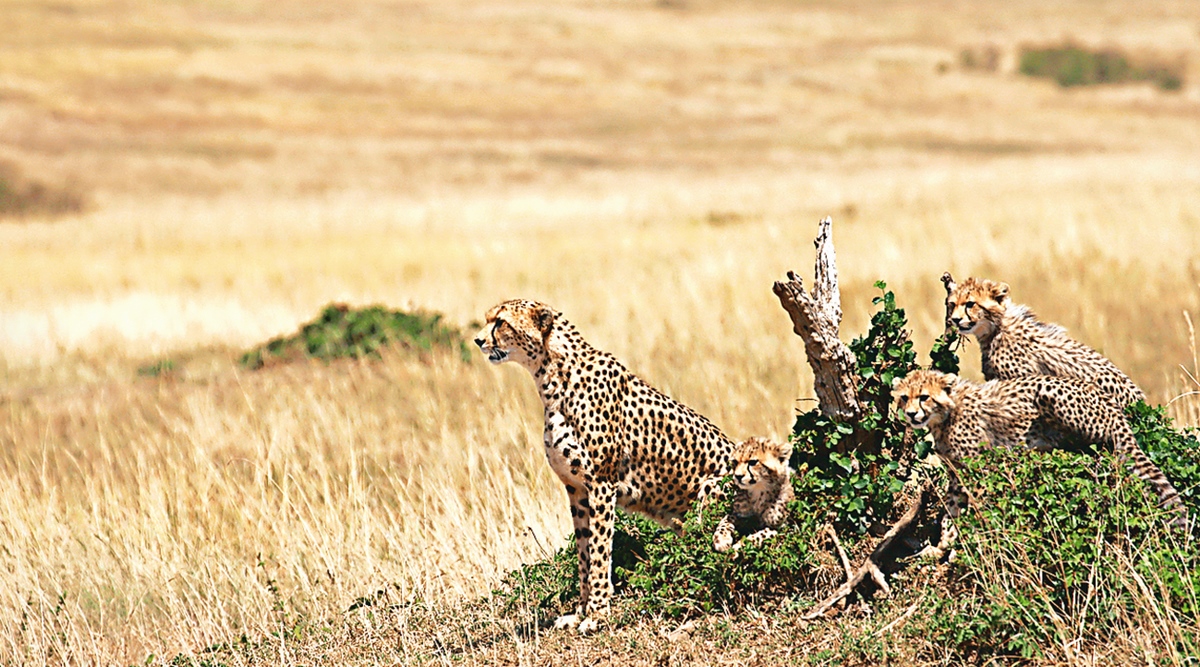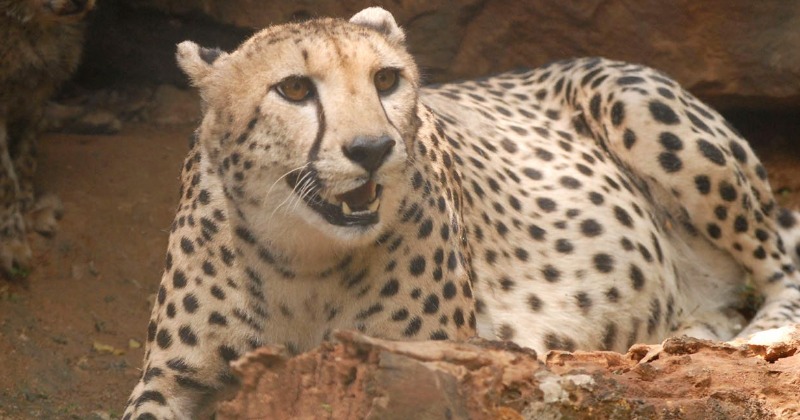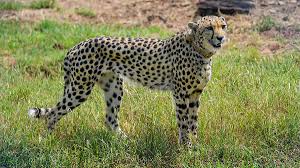Do you know the name of the fastest animal living on land? This is a cheetah which can run at a speed of about 120 kilometers per hour. It is not possible for a human to run at such a high speed. Now one can enjoy such speed only by sitting in a car. The cheetahs that are in the world at present are very small. Before them, the rule was of big cheetahs. A new study revealed that about 10 lakh years ago, the largest cheetahs ever lived on earth.
The cheetahs of today will look dwarf in front of the cheetahs of that time. Talking about their size, they were three times bigger than the size of the current cheetahs. Scientists have achieved great success by finding the largest fossil of a cheetah. This will help in understanding evolution. Also, it will be easy to find out how the population of cheetahs increased.
The largest cheetah ever
Scientists analyzed the fossils of the skull of a giant creature. Research on these fossils has discovered the world’s largest cheetah species ‘Acinonyx pleistocanicus’. This giant predator was as heavy as the biggest cats alive today. Apart from this, it was three times heavier than the current cheetahs.
Fossil of the largest cheetah found in China

The Acinonyx pleistocanicus species of cheetah roamed in Eurasia about 13 lakh to 5 lakh years ago. It was first mentioned in 1925 on the basis of a partial lower jaw bone in Shanxi province of northern China. Research revealed that the world’s largest cheetah roamed in China, a neighboring country of India. These fossils have also been found in China.
In the new study, the researchers analyzed these remains along with recently discovered fossils from China. They estimated the weight of the animal based on the length of the skull, the height of the molar tooth and the width of the bone structure connecting the skull and the spine. This method is considered to be an accurate prediction of body mass in mammals.
Weight of Acinonyx pleistocaenicus species
Researchers found that Acinonyx pleistocaenicus weighed more than 130 kg. These cheetahs could weigh up to 190 kg. It could be comparable in size and weight to the present-day tiger (Panthera tigris) or lion (Panthera leo). It was much heavier than modern African cheetahs (A. jubatus), which can weigh from about 34 kg to 64 kg.

The fossils analyzed using the new method include two jaws or upper jaw bones, recovered in 2021 from Jinyuan Cave in northeastern China’s Liaoning province. Part of a skull is also included, which was originally recovered from the Zhoukoudian cave system in Beijing in the 1930s.
It was misidentified as the skull of a hyena from thousands of years ago. All three specimens date back to the Pleistocene era (2.6 million to 11,700 years ago), about 7,80,000 years ago.
Resemblance to extant cheetahs
The team identified these fossils as Acinonyx pleistocanicus because of the animals’ distinctive features, including their height, thick-walled skull and broad snout, which is not normally seen. The researchers also found that the extinct large-sized cheetahs had some special similarities with modern African cheetahs.

For example, the placement of the teeth of the giant cheetahs and the bony space behind the nose match those seen in extant cheetahs. The researchers recently published their study report related to the fossils of cheetahs in the journal Quaternary Science Reviews.
The species became extinct 5 lakh years ago
The Acinonyx pleistocanicus species became extinct about 5 lakh years ago. Qigao Xiangzu, a paleontologist at the Chinese Academy of Sciences in Beijing, told Live Science that the giant cheetah’s extinction was probably influenced by climate change during the mid-Pleistocene transition.
At this time, the Earth switched from an ice age cycle every 41,000 years to a pattern of longer, stronger ice ages every 100,000 years. This led to longer, more intense winters, punctuated by longer summers.
At one site, researchers also identified another extinct species of cheetah, Acinonyx intermedius. They think it’s a separate species. They think it’s not just a smaller descendant of Acinonyx pleistocanicus. This suggests it may have been a giant beast. On Earth, the Acinonyx pleistocanicus species may have been replaced by smaller cheetah species.
Fossils found in China
The fossils mentioned in this article are preserved in the Administrative Committee of Jinpu New District of Dalian, China (jaw from Jinyuan Cave) and the Geological Museum of China (partial skull from Zhoukoudian Loc.13). Modern A. jubatus specimens from AMNH, USNM and fossil Acinonyx spp. specimens preserved in IVPP, HMV, CECC, and IPUW were examined for comparison.
The new fossil from the upper part of Jinyuan Cave and Zhoukoudian Loc.13 was identified as Acinonyx pleistocaenicus. It is the last and largest member of the genus. Several important newly identified features of the species are somewhat clarified by the new fossil,








